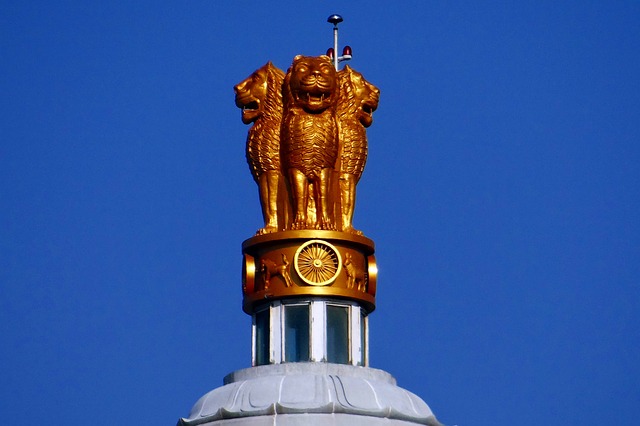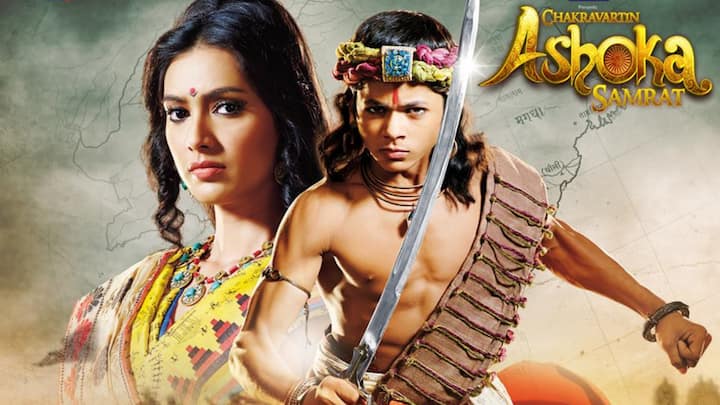The third-century has been a notoriously violent century with many titanic clashes and amazing personalities. On the western side, Alexander the great was leading his campaign of conquest across the Persian peninsula, meanwhile, in India, a revolutionary change was also experienced which culminated in the rise of the Mauryan empire and the reign of Ashoka the Great.

Alexander’s invasion to India.
Around 326 B.C, Alexander for the first time crossed into India by passing through the present-day Hindu Kush mountain range. He halted his army at the bank of the Indus river and demanded that the King Porus of Paurava and King Omphis of Taxila come to him for submission. The King Omphis of Taxila did submit, but King Porus resisted which eventually lead to the battle of Hydaspes.
Though Alexander emerged victorious in the battle of Hydaspes, his army was relatively tired of this never-ending campaign of conquest and homesickness with the very unusual heat of the Indian subcontinent to which they were completely alien. In order for him to quench the rising mutiny among his soldiers, Alexander went back to Greece. This event had totally destabilized northern India and had a huge implication on what would play a key role in what was to come.
Most notable of all the events was the rise of the 20-year-old Chandragupta Maurya who under the guidance of the great teacher, philosopher, diplomat Chanakya laid the first advent of the great empire called “Maurya dynasty” which means the empire of Kings and leaders. By using strategic alliances and supports from the neighboring Greeks who had settled even after the departure of Alexander the Great defeated the great vast empire of Nanda. Henceforth, the rise of a new empire begins to start around 320 B.C.
Table of Contents
Mauryan Dynasty
When Chandragupta Maurya became old, his interest in the Jain religion began to surge which in time led him to embrace a solitude life of a Jain celibate in the latter part of his life. He adopted Sallekhana, a controversial religious practice in which one prepares with an intention of embracing death by fasting in the Jainism and he fasted until his soul left his body.
Ashoka the Great

Chandragupta Maurya was succeeded by his son Bindusara who ruled for almost 25 years. Despite the popularity of both the Kings, it was the second son of Bindusara, the great Ashoka who after living a very invigorating life left great legacies in the spreading of Buddhism all over the world.
In the tales of “Ashokvadana”, One day a young boy came and gave the great master Lord Buddha a bowl of mud. The great master was left amused and started smiling at the gestures of this little boy.
Anand, the disciple of the Lord Buddha was confused and asked his Lord for the reason behind his smiley face. Buddha replied,
“This small boy in his next life is destined to be the King of the Patliputra and he will spread Buddhism to the four corners of the world”.
Kalinga War
In 273 B.C. Ashoka with his shrewdness and alliance with the minister managed to become the next successor after the demise of King Bindusara. During the initial 8 years reign of Ashoka, the dominance of the Mauryan empire was still intact with its control ranging from Persia to Southern India. However, Kalinga, the modern-day Odisha was still independent with the Nanda empire laying its stronghold presence ever since the Chandragupta Maurya. Chandragupta Maurya’s attempt to subjugate the Kalinga has also led to failure.
Due to the increasing presence of armies and its diplomatic foreign relationships, Ashoka sensed rising threats from the Kalinga side. Hence, he decided to launch his military campaigns against the Kalinga. It was also said that Ashoka’s stepbrother Vidya Ashoka fled Maurya and joined Kalinga. With his inability to tolerate such treasons, he decided to invade Kalinga. So despite the many forms of narration, the Kalinga war took place and ended in 261B.C.
Conversion to Buddhism
The battle ended with the victory of the Mauryan empire, but the devastation bought upon by this battle was so horrific and scary that the very next day when King Ashoka descended upon the battlefield, he was left startled and horrified.
With the death of more than one hundred thousand people, more than one hundred and fifty thousand homeless, instead of the water, the blood started flowing in the river Daya. A lady approached King Ashoka on the battlefield and begged him to kill her too. Because she has nothing to live for anymore. With the houses on fire, dead bodies scattered everywhere, children wailing in hunger, Ashoka realized his sins, started crying in agony, and said,
What have I done? Is this my victory or defeat? Is this justice or injustice?
Seeing the devastation to such scale, Ashoka filled with remorse and guilt wanted to repay back for all the sins he had done by doing welfare to the general people. From that moment on, Ashoka renounced armed conflicts and adopted the principles of living a right life
Hence he embraced Buddhism in the ninth year of his reign. He became very thoughtful, generous, kind in contrast to the then violent aggressive Ashoka who was well known for his anger. He appointed governor, agents to obtain more information’s about the welfare of the people. It was all because of all rock edicts and pillar edicts which contain the inscriptions regarding his thoughts, actions, and information on his life and acts. For instance, the lion capital of pillar found at Sarnath has become a national emblem.
How did Ashoka spread Buddhism?
Once, during the time of Bindusara, Ashoka was sent to Ujjain to put down the rising revolt which he did swiftly in a short period of time. But in that process, Ashoka was injured and he was looked upon by Buddhist monks and nuns who treated him so kindly that he was very impressed with the culture of Buddhism.
There, he first came to know about the Buddhist philosophy and the life history of Lord Buddha. At Ujjain, during the recovery process, Ashoka was looked upon by a personal nurse named Devi who was a Buddhist by faith. Later, Devi went on to become the first wife of Ashoka and had a huge role in Ashoka’s conversion to Buddhism. They had two children, son Mahendra and daughter Sanghamitra who went on to play a pivotal role in the spread of Buddhism in Sri Lanka.
Ashoka realized the importance of living according to the code and conduct of the philosophies propagated by Lord Buddha, he demanded his people to embrace Buddhism. The conversion to a huge scale did take place. In order for him to reach a more number of masses, he sends emissaries, missionaries to Kashmir, Northwest Persia, Egypt, Greece, Sri Lanka to spread Buddhism.
Buddhism in Sri Lanka
Not only that, Ashoka sends his son, Mahendra in 251 B.C to Sri Lanka to spread the message of Buddhism to King Devanampiya Tissa. Mahendra’s mission to convert the king to Buddhism was successful which in turn helped in the further conversion of its masses to Buddhism. As a Buddhist king, he built the first stupa enshrining it with the right collar bone of the Lord Buddha. Very soon, the Sinhalese ( meaning Lion killer) people who by origin is from the northeastern region of India began to worship Thuparamaya and Sri Maha Bodhi.
Along with King Devanampiya Tissa, his daughter-in-law, princess Anulla also got converted to Buddhism. But to complete the conversion rituals of the princess, prince Mahendra had to call his sister Sanghamitra to Sri Lanka. Princess Sanghamitra took a small Bodhi tree with her which is currently present at Anuradhapura and is regarded as the oldest Bodhi tree in the world. The tradition of Buddhist nuns also started with the arrival of Princess Sanghamitra in Sri Lanka.
Books on ashoka
Related Articles

